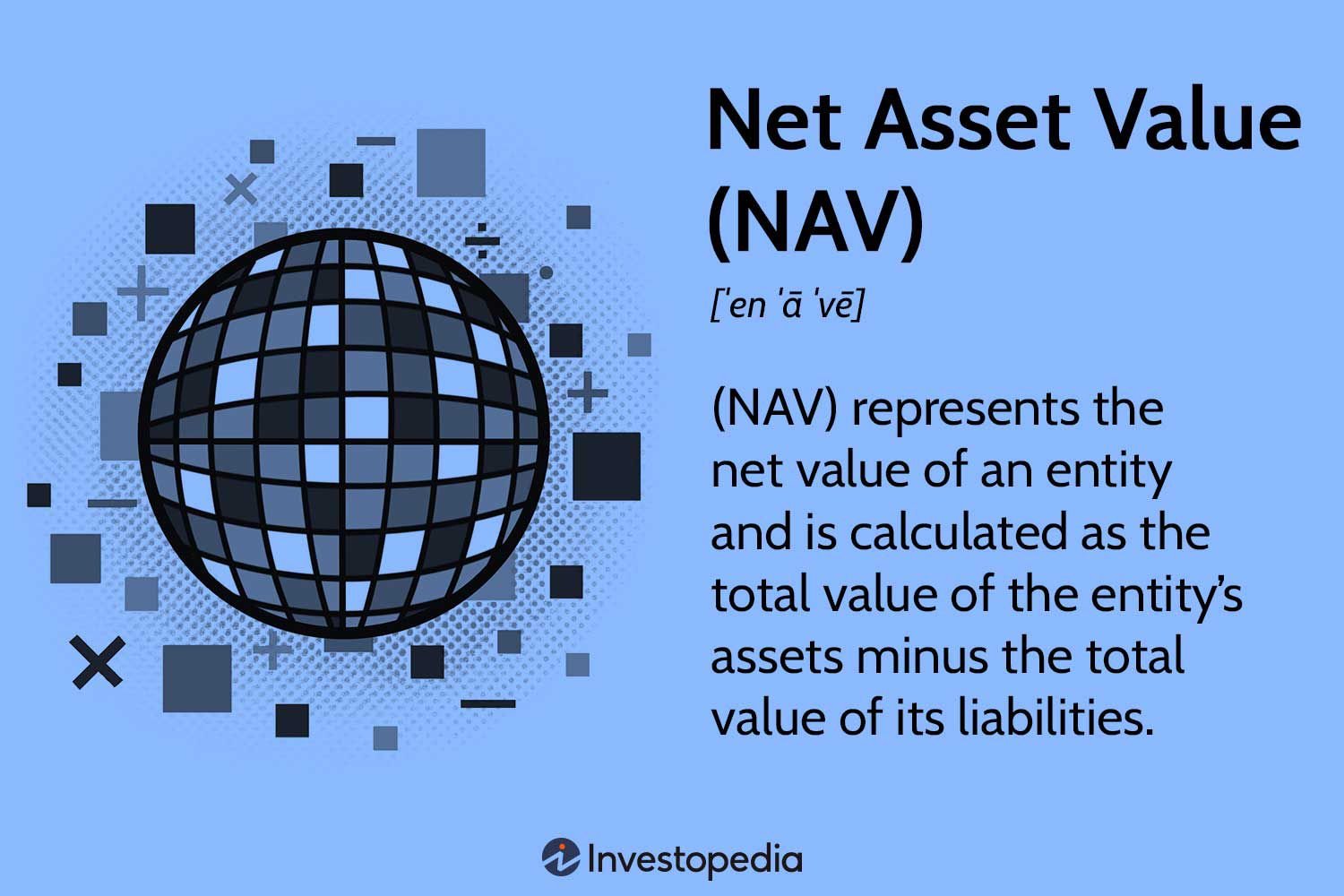Net Asset Value (NAV) is a crucial concept when it comes to understanding mutual funds. So, what exactly is NAV? In simple terms, NAV represents the per-unit value of a mutual fund scheme. It helps investors understand the worth of their investment in the fund. By knowing the NAV, you can gauge the performance and growth potential of a mutual fund. In this article, we will delve into the intricacies of understanding net asset value in mutual funds, empowering you to make informed investment decisions. So, let’s get started on this enlightening journey!
Understanding Net Asset Value in Mutual Funds
Introduction
Before delving into the concept of Net Asset Value (NAV) in mutual funds, it is important to have a solid understanding of what mutual funds are. Mutual funds are investment vehicles that pool money from various investors and invest it in a diversified portfolio of securities such as stocks, bonds, or a combination of both. These funds are managed by professional portfolio managers who aim to generate returns for the investors.
Net Asset Value, often abbreviated as NAV, is a key metric used to determine the value of a mutual fund. It represents the per-share value of the fund’s assets after subtracting any liabilities. NAV is typically calculated on a daily basis and is important for both investors and fund managers as it helps in evaluating the performance of the fund and determining the price at which shares are bought or sold.
Calculating Net Asset Value
The calculation of Net Asset Value involves two primary components: assets and liabilities. Let’s break down the process step by step:
Step 1: Determine the Value of Assets
To calculate the net asset value, the first step is to determine the value of the fund’s assets. Assets include various types of securities held by the mutual fund such as stocks, bonds, cash, and other investments. These assets are valued at their current market price, which is often obtained from reliable sources like stock exchanges or independent pricing services.
Step 2: Subtract Liabilities
Once the value of the assets is determined, the next step is to subtract any liabilities from the total asset value. Liabilities can include expenses such as management fees, administrative costs, and other operational expenses. These liabilities are deducted from the asset value to arrive at the net asset value, which ultimately reflects the value available to shareholders.
Step 3: Divide by the Number of Outstanding Shares
The final step in calculating NAV is to divide the net asset value by the number of outstanding shares. This gives the per-share value of the mutual fund. By dividing the NAV by the number of outstanding shares, investors can determine the price at which they can buy or sell fund shares.
Importance of Net Asset Value
The Net Asset Value of a mutual fund holds significant importance for both investors and fund managers. Here are a few key reasons why NAV is a crucial metric to understand:
Performance Evaluation
Net Asset Value is an essential tool for evaluating the performance of a mutual fund. By comparing the current NAV with historical NAVs, investors can gauge how the fund has performed over a period of time. An increasing NAV is generally seen as a positive sign, indicating growth in the value of the fund’s assets.
Price Transparency
The NAV provides transparency in terms of the price at which investors can buy or sell mutual fund shares. Since the NAV is calculated daily, it reflects the most recent valuation of the fund’s assets. Investors can use the NAV to make informed decisions about buying or selling shares based on their investment goals and the current market conditions.
Entry and Exit Points
The NAV helps investors identify the ideal entry and exit points for investing in or redeeming mutual fund units. Investors may choose to buy units when the NAV is relatively low and sell when it is high, potentially maximizing their returns. However, it’s important to note that timing the market solely based on NAV can be challenging, as other factors like market trends and investment objectives should also be considered.
Factors Affecting Net Asset Value
The Net Asset Value of a mutual fund is influenced by various factors. Understanding these factors is crucial for investors to make informed decisions. Some key factors include:
Market Performance
The performance of the underlying securities held by the mutual fund plays a significant role in determining the NAV. If the market value of the securities increases, it leads to a rise in the NAV, and vice versa. Therefore, market fluctuations can directly impact the value of the mutual fund.
Expenses and Fees
The expenses and fees associated with managing the mutual fund can affect the NAV. Higher expenses can reduce the fund’s net asset value, as they directly impact the overall returns generated by the fund.
Investor Actions
Investor actions such as buying or selling mutual fund units can also impact the NAV. When new investors buy units, the fund’s assets increase, leading to an increase in the NAV. Conversely, when existing investors redeem their units, the fund’s assets decrease, resulting in a decrease in the NAV.
Tracking Net Asset Value
Tracking the Net Asset Value of a mutual fund is relatively straightforward. Investors can typically find the NAV on the fund’s website, financial news portals, or through their investment platform. It’s important to note that NAV is calculated at the end of each trading day, so the figure obtained reflects the value of the fund at that particular point in time.
Investors should review the NAV regularly to stay informed about the performance of their mutual fund investments. However, it’s crucial to remember that NAV is just one metric to consider, and investors should also evaluate other factors such as investment objectives, risk tolerance, and long-term performance.
Net Asset Value (NAV) is a crucial metric for understanding the value of a mutual fund. It is calculated by subtracting liabilities from the total value of the fund’s assets and dividing by the number of outstanding shares. NAV helps investors evaluate the fund’s performance, determine the price at which shares can be bought or sold, and identify potential entry and exit points. Factors such as market performance, expenses, and investor actions can influence the NAV. By tracking the NAV and considering other relevant factors, investors can make informed decisions regarding their mutual fund investments.
How is Net Asset Value (NAV) of Mutual Fund calculated?
Frequently Asked Questions
Frequently Asked Questions (FAQs)
What is Net Asset Value (NAV) in mutual funds?
Net Asset Value (NAV) is the per-unit value of a mutual fund scheme’s assets. It is the total value of the fund’s assets minus its liabilities, divided by the number of units outstanding.
How is Net Asset Value (NAV) calculated?
The Net Asset Value (NAV) of a mutual fund scheme is calculated by taking the current market value of all the scheme’s assets, subtracting any liabilities, and then dividing the result by the total number of units outstanding.
Why is Net Asset Value (NAV) important in mutual funds?
Net Asset Value (NAV) is important in mutual funds as it represents the value of each unit in the fund. It helps investors track the performance of their investment, determine the worth of their holdings, and make informed decisions regarding buying or selling units.
How often is Net Asset Value (NAV) updated?
Net Asset Value (NAV) is usually calculated and updated at the end of each trading day. Investors can find the updated NAV on the mutual fund company’s website or financial news platforms.
What factors can cause changes in Net Asset Value (NAV)?
Net Asset Value (NAV) can change due to various factors such as market movements, changes in the value of underlying assets, expenses incurred by the fund, and inflows or outflows of money from the fund.
Do mutual funds with higher Net Asset Value (NAV) always perform better?
No, the performance of a mutual fund cannot be solely determined by its Net Asset Value (NAV). The NAV simply represents the value of each unit and does not indicate the fund’s future performance. It is important to consider other factors like historical returns, fund manager’s expertise, and investment strategy before making investment decisions.
How does Net Asset Value (NAV) affect mutual fund investments?
Net Asset Value (NAV) affects the value of an investor’s holdings in a mutual fund. As the NAV increases, the value of the investor’s units also increases. Similarly, if the NAV decreases, the value of the investor’s units decreases. Investors can buy or sell units based on the NAV to maximize their returns.
Are there any fees associated with Net Asset Value (NAV) in mutual funds?
Mutual funds may charge fees such as expense ratio, load charges, or exit loads, which are deducted from the Net Asset Value (NAV). These fees cover the administrative, management, and transaction costs associated with running the fund. It is important for investors to be aware of these fees before investing.
Remember that the format of the questions should be in
HTML tags.
Final Thoughts
Understanding net asset value (NAV) in mutual funds is crucial for investors looking to make informed decisions. NAV represents the per-share value of a mutual fund and is calculated by dividing the total fund assets by the number of outstanding shares. By analyzing NAV, investors can assess the fund’s performance, track its gains or losses, and determine the fair value of their investments. It provides transparency and helps in gauging the fund’s financial health. As such, investors should regularly monitor NAV to stay abreast of market movements and make sound investment choices. Understanding net asset value in mutual funds empowers investors with essential knowledge to navigate the financial landscape confidently.



